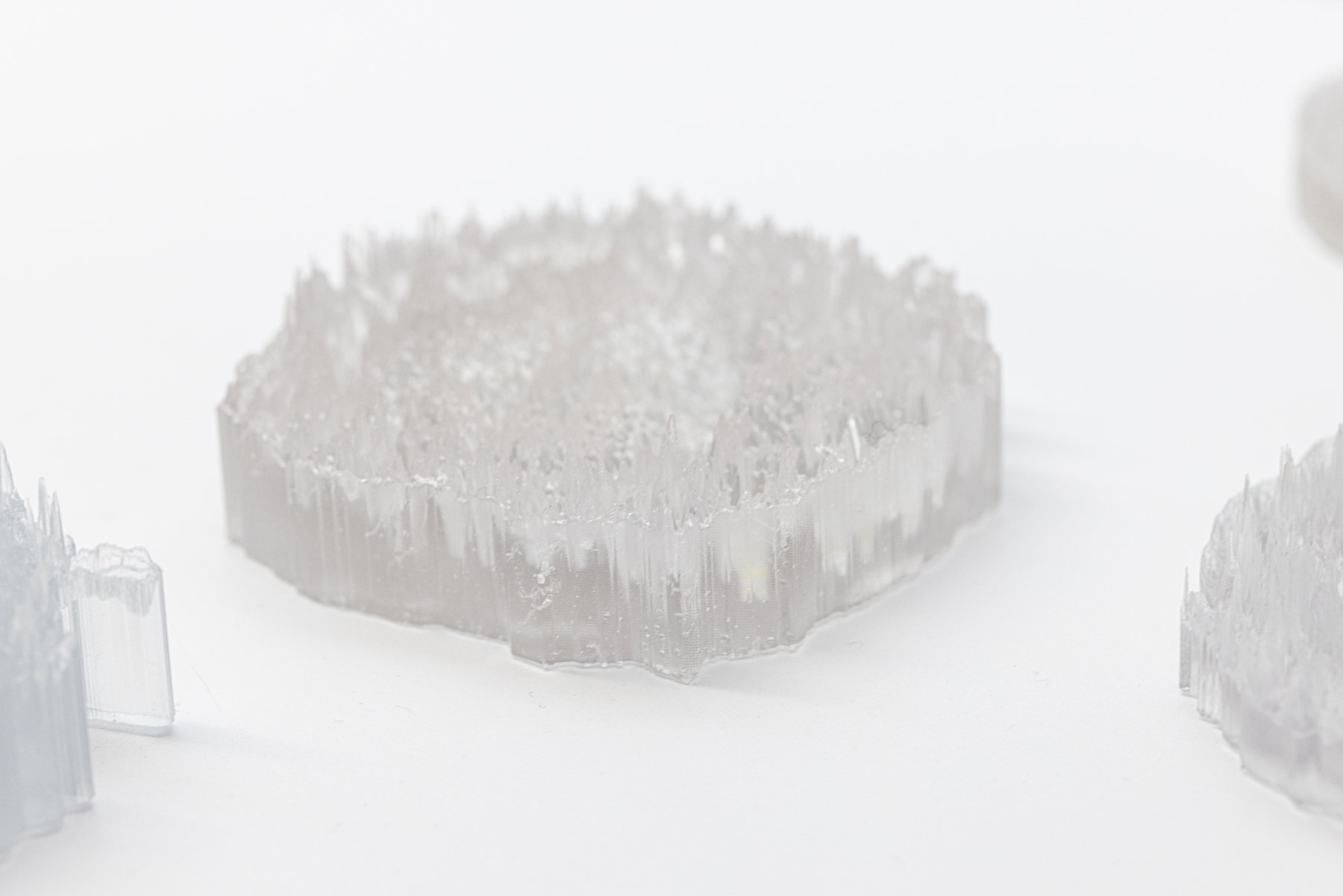SUZANNE ANKER
“RETURN TO LIFE:
IN AND OUT OF THE BODY”
After a visit to Montefiore's Institute for Reproductive Medicine and Health lab in Hartsdale, where she was guided with care and generosity by Heather Feil, Suzanne Anker observed embryos up close and learned more about the science of fertility preservation and IVF. Inspired by this experience, she returned to her studio and the SVA Bio Art Lab, where she began creating a work that directly engages with the emerging field of Oncofertility—an area of medicine that combines cancer care and reproductive health to help cancer survivors preserve their fertility.
In vitro fertilization (IVF) is a form of assisted reproductive technology, a fusion of medical advancements that allow for the fertilization of an egg outside a woman’s body. This process involves a delicate balance of medication and surgical intervention, using stored sperm to fertilize the egg. The resulting embryos are preserved in cryogenic tanks, awaiting the moment they can be implanted into the uterus to begin their journey of life. IVF serves as a vital tool for women who face obstacles to natural conception.
Whether due to age, medical conditions, or the necessity of treatments like chemotherapy, IVF offers a chance for many to realize their dreams of becoming mothers. For example, women with cancer often face the heartbreaking dilemma of needing radiation or chemotherapy to save their lives, which can, unfortunately, compromise their fertility.
In these cases, IVF becomes a lifeline. Eggs are extracted from the ovaries, frozen, and preserved until they are ready to be re-implanted as embryos, giving these women the hope of future motherhood despite the challenges they face. It’s a technology that extends beyond medical necessity; even public figures like Michelle and Barack Obama turned to IVF to conceive their daughters.
The story of IVF can be seen as a powerful metaphor for life emerging after a long, cold winter. Like perennial plants that lie dormant under a blanket of frost, only to awaken when spring arrives, the frozen embryos, once “sleeping” in cryogenic preservation, are brought back to life. After chemotherapy or other treatments, these embryos are “reawakened” and implanted into the uterus, beginning their own cycle of growth and development. It is, in many ways, a resurrection—a return of life, a second chance.
This collection of photographs draws on the metaphor of rebirth after frost, using it as a poetic lens through which to view the IVF process. The images capture the delicate beauty of ice crystals, symbolizing the preservation and eventual revival of life through this technique. The sculptures in the series mirror the intricate patterns of crystallization, further emphasizing the fragile yet profound nature of this technology. IVF, like nature itself, holds the power to bring life back from the frozen stillness, offering hope, transformation, and the promise of a new beginning.






















ARTIST BIOGRAPHY
Suzanne Anker is a renowned visual artist and theorist whose work explores the intersection of art and the biological sciences, focusing on issues like genetics, climate change, species extinction, and environmental degradation. She often uses "pre-defined and found materials" such as botanical specimens, medical artifacts, laboratory tools, and microscopic images. Anker’s practice spans digital sculpture, installation, large-scale photography, and plant growth under LED lights.
Her work has been exhibited internationally, including at the Beijing Art and Technology Biennale, Wuhan Biennale, Walker Art Center, Smithsonian Institute, the J. Paul Getty Museum, and the Museum of Modern Art in Kyoto. Anker's exhibitions have received coverage in major publications, including the New York Times, Artforum, and Nature. Anker co-authored “The Molecular Gaze: Art in the Genetic Age” and “Visual Culture and Bioscience”.
Her writings have appeared in Art Journal, Nature Reviews Genetics, and Art in America. She has hosted the Bio Blurb radio show with MoMA and has lectured at prestigious institutions, including Harvard, Cambridge, Yale, and the Royal Society in London. Since 2005, she has chaired the Fine Arts Department at SVA, where she continues to develop innovative projects in the SVA Bio Art Lab.
www.suzanneanker.com
